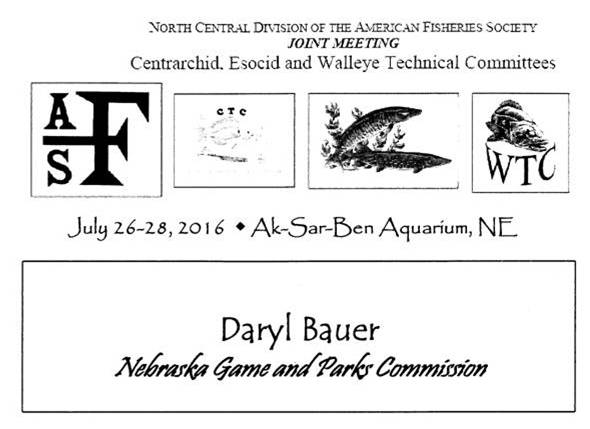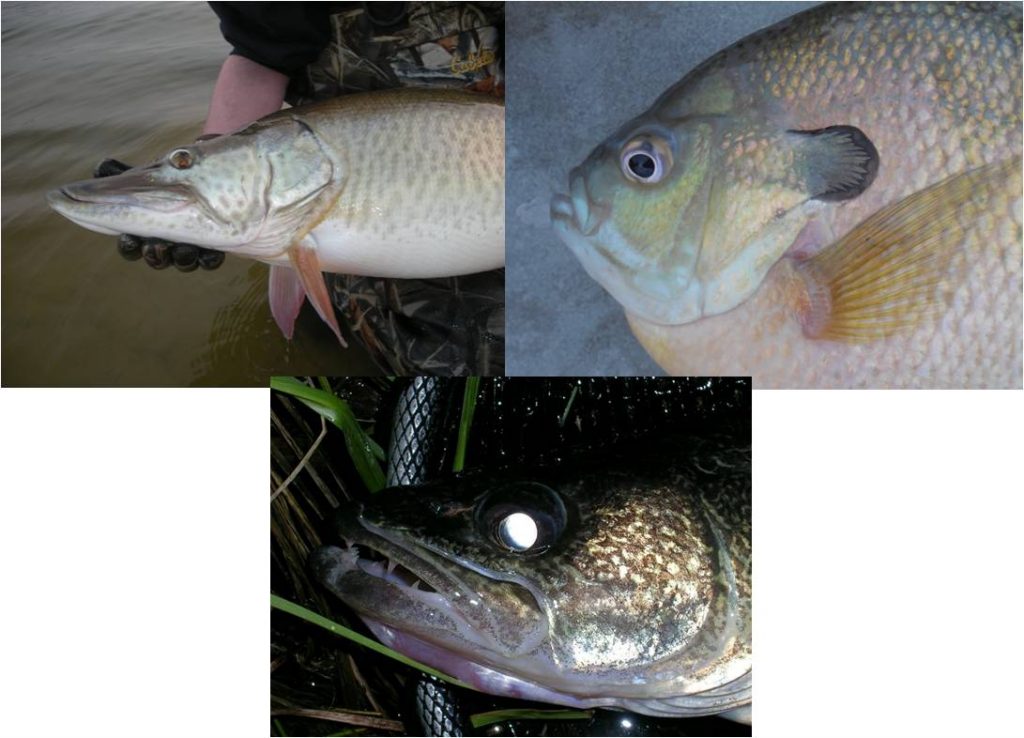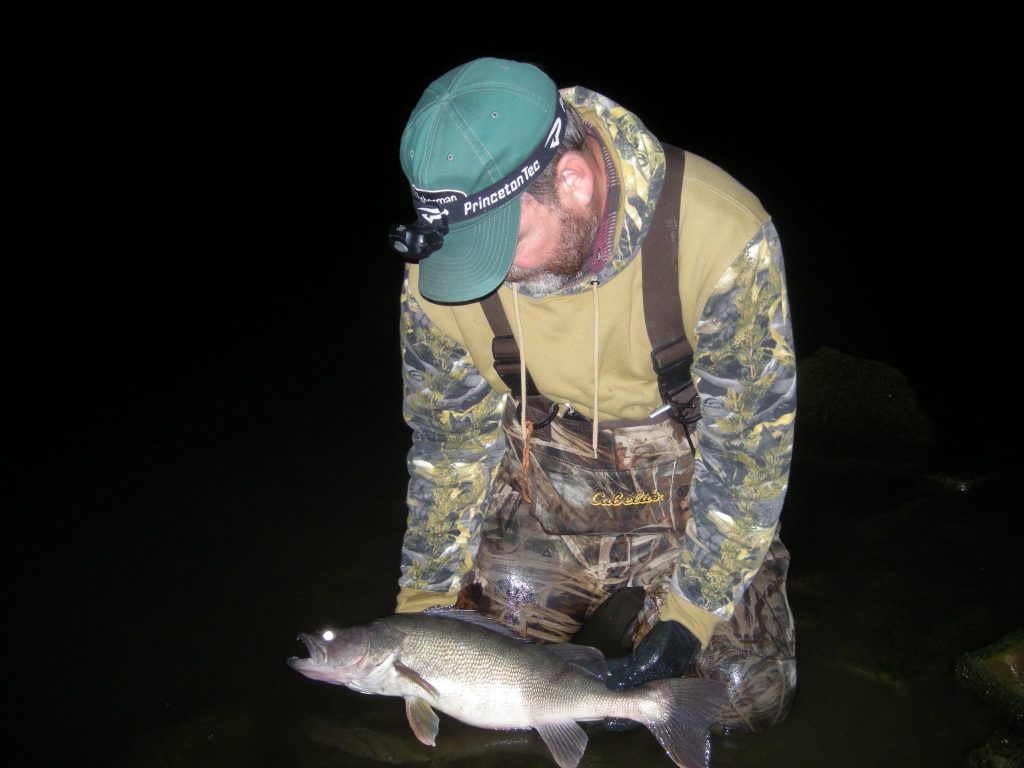I try not to bore folks too much with my day-to-day job activities here on my blog. But, I want to share with you one thing I did last week. . . .
The corollary to the fishing is always better in some other state (Grass is always greener), is “Why don’t you do what the biologists in _______________ are doing?” (fill in blank with whatever state you choose where the fishing is better). I hope folks understand that we usually have a very good idea of what fisheries biologists in other states are doing, and they have a good idea of what we are doing too. There are many professional opportunities for pointy-headed fisheries biologists to meet together and share knowledge. That happens frequently.
As a matter of fact, that kind of thing happened last week as we hosted the summer technical committee meetings of the North Central Division of the American Fisheries Society.
Now, let me explain exactly what this meeting was: The American Fisheries Society (AFS) is THE professional society for pointy-headed fisheries biologists and other fisheries workers. The North Central Division of AFS are the states in the north-central part of the country, and of course Nebraska is included in that division. The technical committees of the North Central Division are working groups of fisheries professionals interested in those particular fish. The past several summers some of those technical committees have combined their summer meetings, and last week we hosted the Centrarchid (i.e. Sunfish family), Esocid (i.e. Pike family) and Walleye technical committees at our Ak-Sar-Ben Aquarium south of Gretna.
Forgive me, I did not get an exact count, but we had 70, to 80-some pointy-headed fisheries biologists at the meeting last week. And again, I did not get to meet everyone, but I know we had biologists there from as far away as Washington state, Texas and Canada. A number of us from Nebraska were able to attend as well as folks from most states in this north-central part of the country.
Participants on Tuesday took a tour of some of our Aquatic Habitat projects in the Omaha area and then had a workshop on invasive and endangered species management in the afternoon. On Wednesday we listened to presentations; here is a list of most of the “papers” that were presented:
Assessment of growth and relative survival of diploid and triploid Saugeye in Kansas impoundments
In-lake hatch rates and their implications for managing Walleye populations that serve as eggs sources for Minnesota hatcheries
Double-crested Cormorant management on Leech Lake, Minnesota
Turnover rates of carbon and nitrogen isotopes in age-0 Walleye (Sander vitreus) tissues following a laboratory diet switch experiment
Movement and survival (initial and short-term) of stocked yearling Muskellunge in Spirit Lake, Iowa
Identifying Walleye recruitment bottlenecks in northern Wisconsin lakes–version 2.0
Stock structure, dynamics, and demographics of Walleyes spawning in tributaries to Green Bay
Dynamics and distribution of the Lake McConaughy Walleye
Fishes of the Dakotas
Short-term survival of Gizzard Shad after dummy transmitter transplantation
Insights into managing wetlands as nursery habitat for endangered Razorback Sucker, Xyrauchen texanus, after three years of success at Stewart Lake, middle Green River, Utah
Colorado Pikeminnow recruitment in the upper Colorado River basin: a new perspecitive for the Green River, Utah
Diary of an age-0 Walleye in Harlan County Lake
Short-term mortality and retention associated with passive integrative transponders in age-0 Walleye
Walleye in Washington: the status of Walleye promotion and opportunities in inland lakes and the deregulation of Walleye in the main stem of the Columbia River in an attempt to reduce their number
Use of rotenone to improve growth of sport fishes
Estimating genetic diversity levels in Wisconsin’s feral Walleye broodstock populations
Suppression netting to control Northern Pike in hopes of reducing downstream spread into the main stem of the Columbia River
You can see we had a variety of presentations from a variety of places. Yep, it was all boring, technical, pointy-headed “stuff”, but it was very interesting to a bunch of boring, technical, pointy-heads! There was a wealth of information shared between a bunch of fisheries biologists, folks on the cutting edge of fisheries science and fisheries management across the country.
It was not all boring lectures and presentations, there was a little float trip down the Platte River Tuesday afternoon and opportunities to socialize, and share ideas during noon meals and evening socials.
In the past, I used to oversee Walleye research activities here in Nebraska, and at that time attended the summer and winter meetings of the Walleye Technical Committee pretty much every year. I can tell you that these technical committees are smaller, more intimate groups of fisheries professionals with very common interests. Regular attendance at the technical committee meetings meant you developed professional relationships and personal friendships with a bunch of biologists from other states and Canadian provinces. I looked forward each summer to seeing those folks again, renewing acquaintances and “talking shop”.
As my job duties have evolved, I have stepped aside and encouraged other Nebraska biologists to participate in the Walleye and other technical committees. I was thrilled that this year we were hosting those meetings and I would have a chance to see some “old faces” and catch up with what was happening in their lives. I was able to do that, even for just a short, but enjoyable time.
I hope folks realize that none of us get into the fisheries field to get rich. We all do it because it is our passion. We are not perfect, in fact we are always learning new things. But, I do hope people know that we take the stewardship of Nebraska’s fisheries resources very seriously and professionally we make it a point to stay up to date with the state of the science. Meetings like the technical committee meetings we hosted last week are an important part of doing our best!
The post Tech Committee Meetings appeared first on NEBRASKALand Magazine.


















